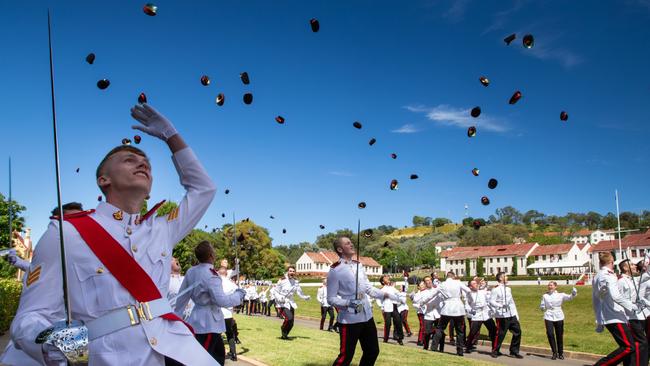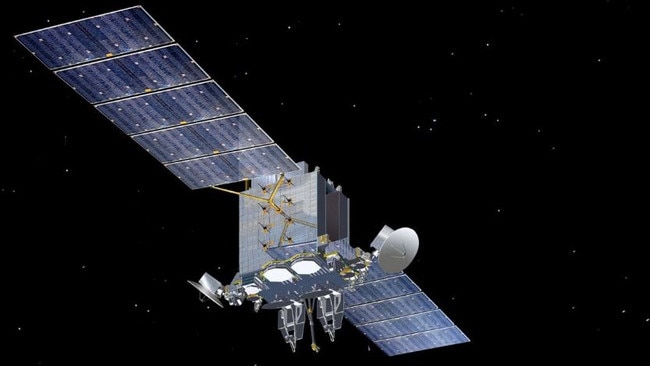Albanese government to offer $40,000 to keep defence workers to hang around
The Albanese government will spend further $600m to try and turn around Defence’s workforce crisis, offering $40,000 bonuses to personnel to sign-on for another three years.

The Albanese government will spend a further $600m to try to turn around Defence’s workforce crisis, offering $40,000 bonuses to personnel to sign on for another three years.
The move comes as space industry and defence experts lash the government’s axing of a $7bn satellite project, warning the decision jettisons five years of work and leaves the ADF without a clear path to secure a promised sovereign communications network.
The new retention bonuses have been scaled back from $50,000 offered under a two-year, $400m pilot program, but eligibility has been extended to include personnel approaching four years’ service and those who have served seven to nine years.
They will be offered from July next year under a workforce blueprint to be unveiled on Tuesday, which will aim to expand Defence’s uniformed and public service numbers from a current 78,806 to 100,000 by 2040.
It follows dire budget forecasts earlier this year, which warned Defence’s personnel shortfall would hit 5000 by July next year, despite escalating workforce demand across the services.
The new plan will declare the trial bonus scheme a success, with almost 80 per cent of eligible personnel opting to take the payment and commit to a further three years’ service.
But it will warn the nation’s competitive labour market “will continue to put pressure on Defence’s ability to attract and retain the right people”.
The government confirmed on Monday The Australian’s report that it would cancel the nation’s biggest-ever space project, known as JP9102, declaring just 18 months after nominating US defence giant Lockheed Martin as preferred tenderer that it “would not meet strategic priorities”. It said it would prioritise a multi-orbit satellite capability to make the system more resilient, rather than a planned three to five geostationary satellites which experts argued were still needed.
There was no word on when the alternative system would be delivered or how much it would cost.
It said the ADF would continue with its current satellite communications system, which involves purchasing bandwidth from the US military and a commercial provider.
Defence had been working on the proposed system since at least 2019, putting it to tender in 2021 and selecting Lockheed Martin to deliver the capability in April 2023.

Opposition defence spokesman Andrew Hastie blasted the “disgraceful decision”, saying the government was “wasting more time” when it was now widely accepted the nation could have little or no warning before a major conflict.
“The cancellation of this project devastates our capabilities in strategic overwatch and our ability to co-ordinate our future defence force,” Mr Hastie said.
“Under Labor, our national security is neglected. There is no leadership and no money.”
The Australian Strategic Policy Institute’s space capability expert Malcolm Davis said he couldn’t understand why the government had gone back to the drawing board.
“We may end up reinventing the wheel at great cost and with significant delays in deploying a capability,“ Dr Davis said.
He said the “vague” decision to start afresh imposed a needless delay which the ADF could ill afford, and sent a message to industry “that this government really isn’t interested in space and isn’t really going to support the local sector”.
He said adding low earth orbit satellites to the proposed system was not a bad thing, but geostationary satellites – which orbit at 36,500km – would be needed as the system’s backbone.
“Geostationary satellites give constant coverage over the same area, because they are up so high their orbit matches the earth’s rotation,” Dr Davis said.
“Whereas low earth orbit satellites orbit faster and shift their position in terms of a geographic location on Earth. So you need many more LEO satellites than you do in GEO.
“LEO satellites can be smaller, simpler and cheaper, but you need more of them and you need to constantly replace them. A GEO satellite can last up to 20 years.”
The government had only approved $150m towards the $5.2bn to $7.2bn project, with industry sources saying there was not enough money in Defence’s capability plan for it to proceed.
Defence claimed there was still $9bn to $12bn within the program to invest in “enhanced space capabilities”, but failed to commit to a fresh delivery timeline or budget.
Space Industry Association of Australia chairman Jeremy Hallett said the cancellation of the project was a “massive blow” for the domestic space sector, costing hundreds of jobs and denying the ADF much-needed capabilities.
“At the moment it looks like there is no path forward for Australia having its own space capability, certainly for military purposes,” Mr Hallett said.
“It’s quite inexplicable when you look at the rest of the G20 increasing space budgets; some are even doubling them.
“But Australia has basically cut everything civil or military with respect to space.”




To join the conversation, please log in. Don't have an account? Register
Join the conversation, you are commenting as Logout